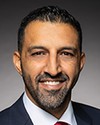Thank you very much, Mr. Chair.
Thanks to all of the witnesses. It's a very interesting discussion we're having this afternoon.
First of all, I'll go to Ms. Wong and Capital Power.
You spoke about the holistic cost of delivery and energy. Of course, in Alberta, most of the natural gas goes out to all the farms and all the communities. That network is already there. I think it's critical to talk about projects that are already in the ground. We have the same scenario in other provinces. They've developed their systems, and we're happy for them. We seem to have a bit of a concern, though, as we continue on our natural gas journey.
One of the other things—Mr. Simard mentioned this—is cost breakdown. That's something I would like all of the energy producers we're talking to today to give some thought to. Maybe you can give us this information.
There is a cost to all aspects of a project. I've always said it's important to measure the commitment—the greenhouse gas emissions and whatever it is you have to use from the first shovel that digs something up to the last shovel that covers it up. Yes, we have the use of it, and the length of time you're going to run a project. All of those things are important, but it's also important to make sure you analyze all the environmental aspects, because it's the environment we're dealing with. The greenhouse gas aspect is a thing that everybody wants to focus on, it seems, but it's the environment we're concerned about. I'm curious about whether we could look at that.
First of all, Ms. Wong, do you have those types of numbers available for, as I said, the full life cycle of projects you're engaged in?




